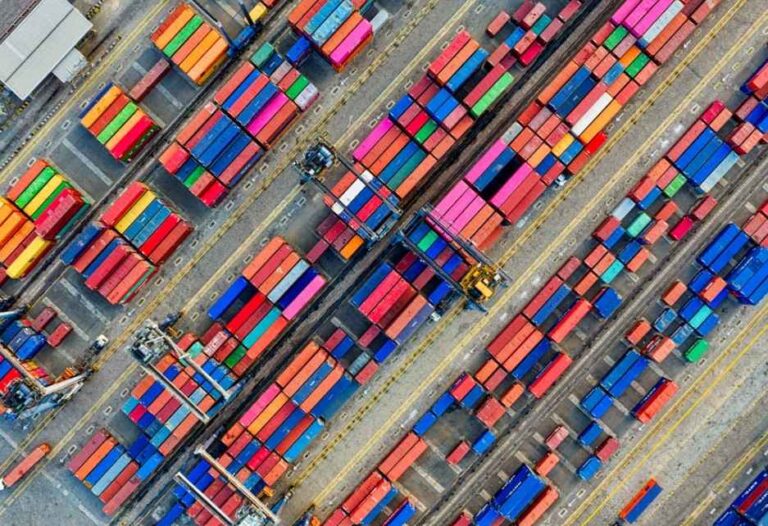World trade reshaped by the dynamics of the war in Ukraine, with a balance sheet one year after the conflict that highlights how sanctions against Moscow have revolutionized the routes of goods at a global level.
From Europe to China, up to the USA and strategic countries such as the Eurasian ones and Turkey, everyone has been involved in the retaliatory measures that the West has imposed against Putin, affecting the exchange of goods and raw materials (hydrocarbons and more ) coming from Moscow.
As a result, new trade trajectories have emerged, with strengthened anti-Russia or anti-West strategic alliances.
Table of Contents
A year of war in Ukraine: 5 effects on the world economy
Russia had already been working to re-orient its hydrocarbon exports towards the East, as demand for oil and gas from East Asia was expected to grow over the decades. While the Green Revolution would lead to the end of Europe’s dependence on hydrocarbons. fossil fuels.
The sanctions have only accelerated the process. Moscow and Beijing, for example, are discussing a 50 billion cubic meter per year contract to support the construction of Power of Siberia 2. Which would run from the Russian Arctic to China via Mongolia.
It would supply gas from fields that until recently served the European market. Supplies from the Far East would come from fields operated by Gazprom off the coast of Sakhalin Island.
Also crucial in recent months has been India’s growth as Russia’s partner in the purchases of energy raw materials, especially oil. Meanwhile, Russia has also been working hard to secure new import sources after being cut off by European exporters for a wide variety of goods.
China has become the main contributor to the recovery of Russian imports, increasing its deliveries by 21% year-on-year since September. But other suppliers such as Turkey, Azerbaijan and Belarus have also come to the fore.
Many of the more sophisticated products such as semiconductors and high-quality machinery are still missing, but consumer goods and basic agricultural and industrial inputs are mostly sold.
Meanwhile, Russia’s partners in the Eurasian Economic Union (EAEU) increased exports to Russia by 70% year-on-year in the first seven months of 2022. Kyrgyzstan, for example, more than doubled its exports to Russia since the beginning of the war, while its imports from China have almost tripled.
Read also: Will Russia dominate the Arctic trade?
What is changing in EU trade, also with sanctions
EU, US and UK exports to Russia fell by more than half in the May-July period last year, when adjusted for inflation, compared to the 2017-19 average, according to European Bank data.
But that drop coincides with a more than 80% jump in sales from Europe and the United States to Armenia and Kyrgyzstan. These two countries, in turn, more than doubled their exports to Russia over the same period, indicating a possible diversion of trade through new routes, the bank said.
One possible driver behind the changing trade patterns is that Western companies are voluntarily withdrawing from direct sales to Russia even when products are not subject to sanctions.
The winners in the new trade routes
According to some analyses, there are countries that are taking advantage of the new dynamics triggered by the war.
For example, Turkey. Few states have a more advantageous geographical position in geopolitical affairs than Turkey. And few leaders know how to exploit inherent opportunities better than leader Recep Tayyip Erdogan.
Since Russia invaded Ukraine, Erdogan has not missed a beat in exploiting the opportunities presented by both the West and the Kremlin. Thus knowing that with Turkey located at the crossroads of Europe, Asia and the Middle East, none of the major powers dare lose Ankara as an ally.
The latest suspicious plan advanced by Vladimir Putin and Erdogan is to transform Turkey – connected to Russia by several sections of gas pipeline – into a regional gas hub. How will Europe know that the gas coming out of this hub is not of Russian origin rather than, for example, LNG from Azerbaijan or Qatar?
Another winner of the sanctions is Azerbaijan, which has also played both sides of the field, signing new gas deals with European Commission President Ursula von der Leyen. But also increasing exports to Russia on the other.
Meanwhile, countries such as Iran, China and India are trying to boost trade turnover by pushing the International North-South Transport Corridor (INSTC) project for better connectivity through a multimodal transport network that extends on rail, road and sea.
International experts say this project could become an alternative to the Mediterranean-Suez Canal route that would allow Russia to bypass waters dominated by its Western rivals.
Read also: Global trade passes through “choke points”: what they are and why they are essential in geopolitics












